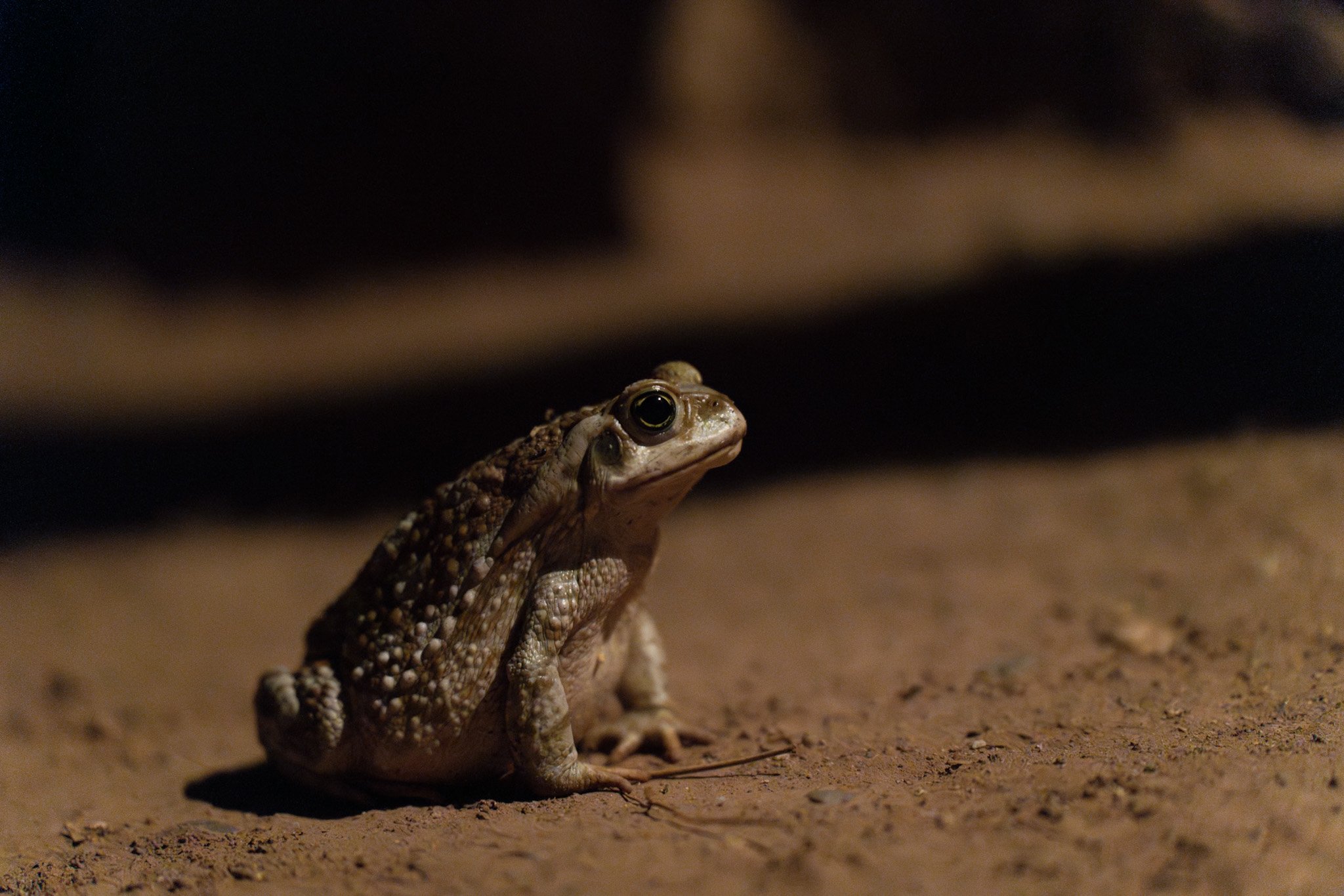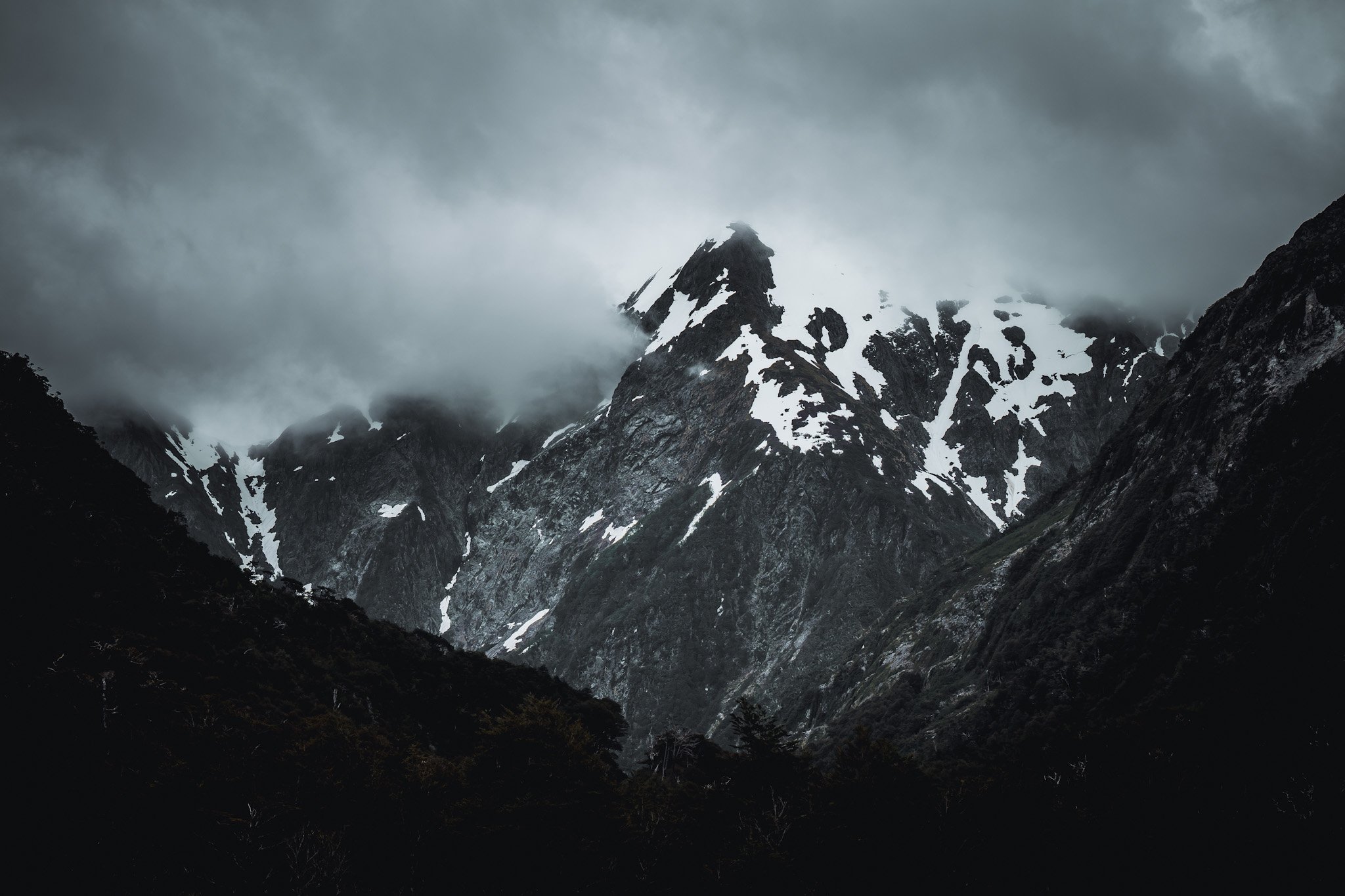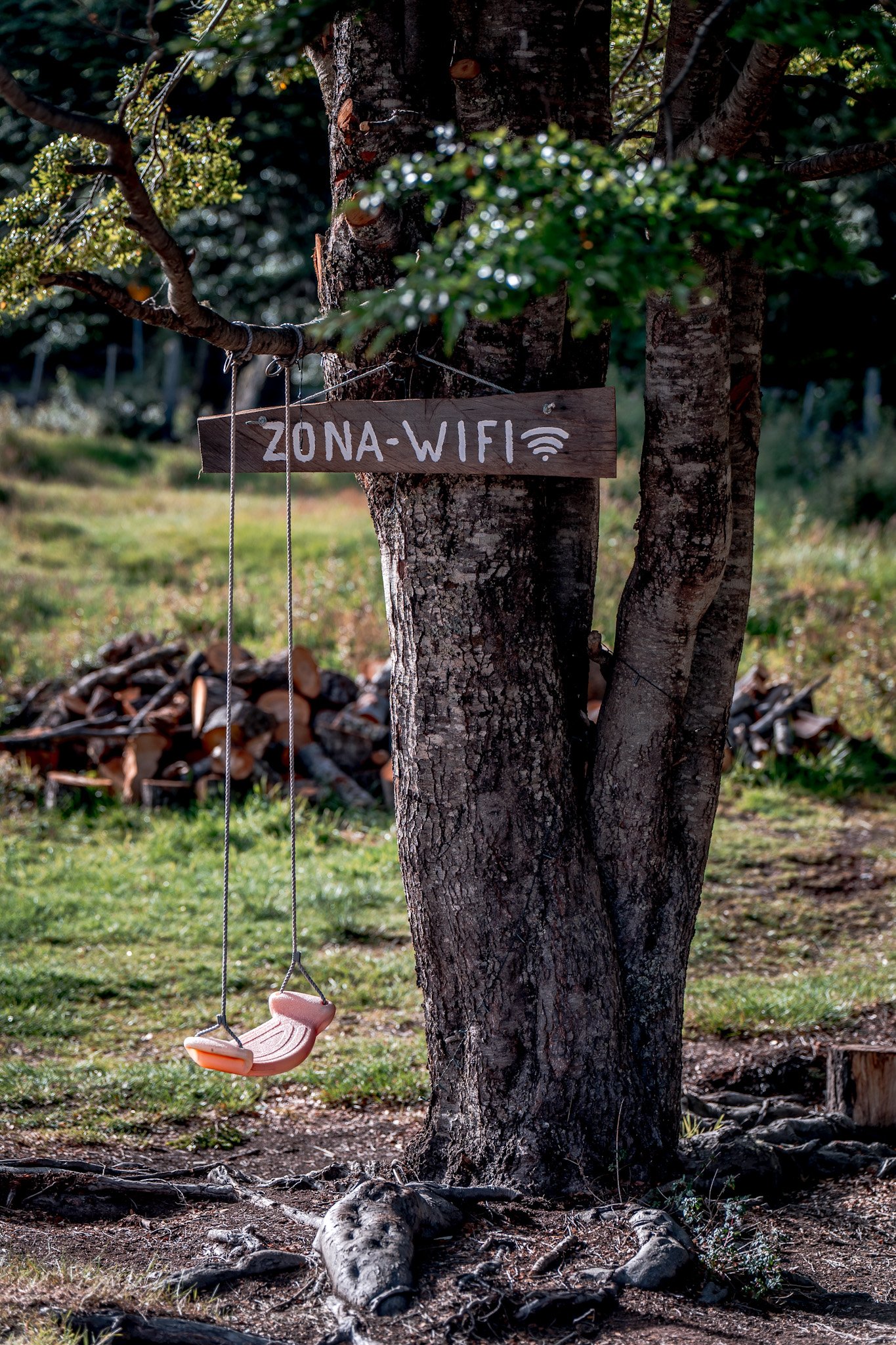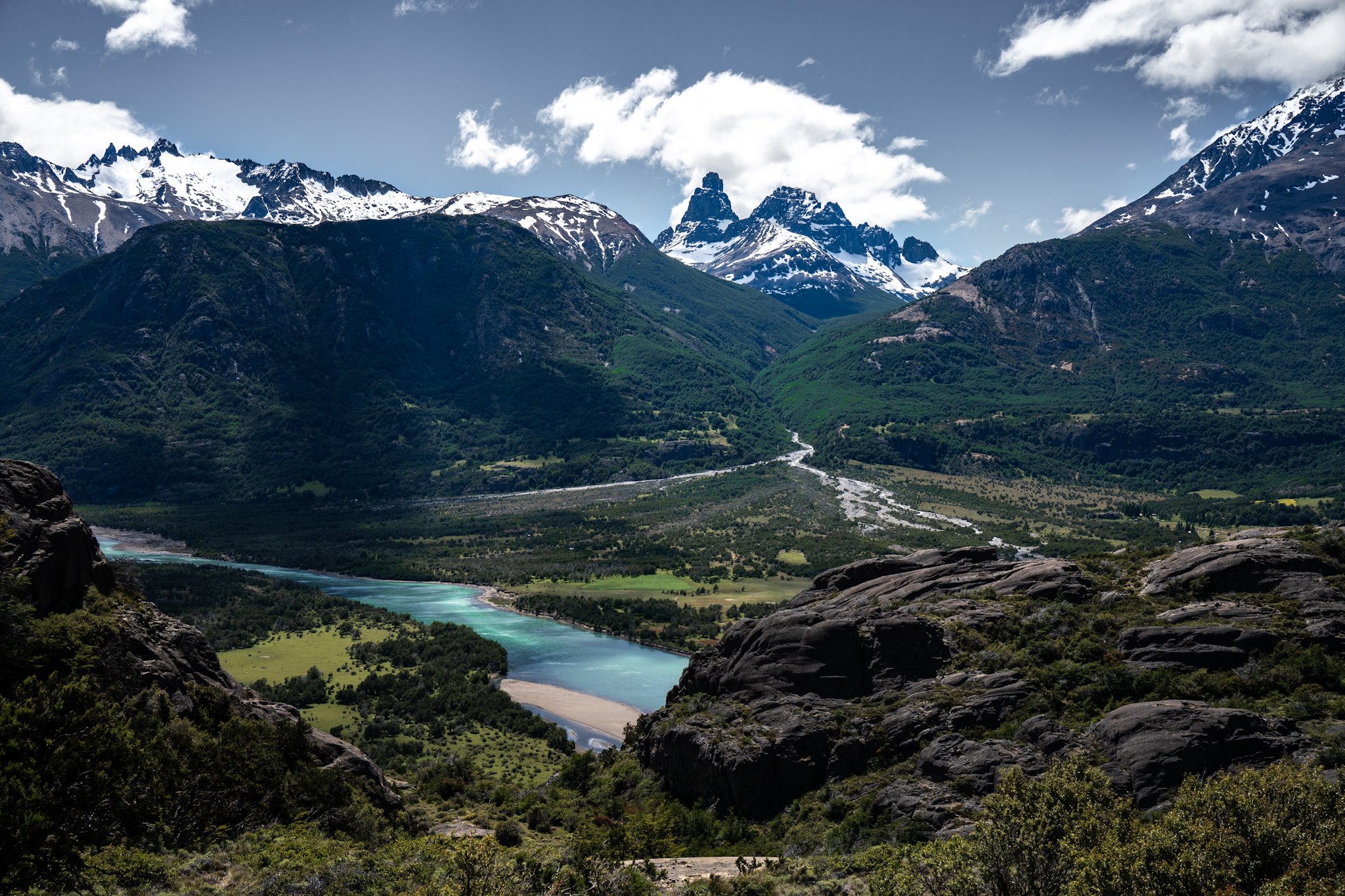Patagonia
Disclaimer
The bird world in Patagonia includes 160 species, so this blog post is rich in beautiful bird photos.
For two days we relax in Guandacol. Fortunately, the hotel has air conditioning, it is brutal hot outside. You can only leave the room after sunset. We are trying to organize a transport to get out of this heat as quickly as possible. Of course we found nothing and so we sat sweating in the saddle until the next larger city.
We decide to skip a few kilometers south by bus. We've been cooked through enough in Central America. With the VIP night-liner, this is pretty comfortable. 1,000 kilometers for the equivalent of 18 €.
We make a short stop in Santiago, the capital of Chile. It's time to get rid of the biggest misconstruction in the history of outdoor equipment. There was not a night in the tent where none of us woke up in the morning on the cold floor.
We started again in the city of Puerto Montt, more precisely at kilometer 0+00 of the Carretera Austral Ruta 7 (southern road). The city is also referred as the gateway to Patagonia.
The landscape is beautiful and so different from what we have seen lately. It's all so green and we haven’t seen trees and forests for a long time. The many fern species that unfold everywhere give the area a touch of Jurassic Park. Spring is also here.
Among the mammoth leaves (giant rhubarb) Littlefoot would also have found a place.
The Carretera Austral is a popular road for cyclists and motorcyclists. It alternates on gravel and asphalt along impressive fjords, past volcanoes, glaciers and through the rainforest.
On the first evening we were camping on the beach and were able to observe a few pretty clever seagulls. They peck out the largest shells in low water, then fly about 10 meters high and let them fall out of the beak and smash them on the ground to get to the mussel meat.
The beak of the American Oystercatcher is much stronger, he simply cracks the shells with his large conspicuous saber.
The sun sets here on the Pacific coast directly above the sea - there is very beautiful light to see.
One evening we spend the night at a river estuary. Again, there are many birds to observe. The Chimango Caracara stretches its wings in the evening sun.
The squealing of the Southern Lapwing is quite annoying in the long run.
Also annoying is the Austral Thrush.
A young night heron is fishing.
Often it goes over the fjords only with the ferry.
The region is not only the gateway to Patagonia, it is also the gateway to rain. In Hornopiré National Park, for example, 3,989 mm of rain fall in the year. In Hamburg, the felt wettest city in Germany, we "only" get to 733 mm/year. We felt that in the first days on the Carretera Austral. You just have to think about to take off the rain jacket, then the next shower will run over you. In the evening you are often quite shriveled and finding a good place to camp is a lot of value. The Cullen family would feel very comfortable here.
The countless little birds don't mind the rain. Everywhere it rustles in the trees and there are loud arguments about the best place. We see the Austral Negrito.
The Chucao Tapaculo has the most striking call of all. It sounds like a laser cannon from StarWars. He was the most difficult to photograph of all, as he is quite shy and hops around all the time.
The Green-backed Firecrown is the only hummingbird species that is still native so far south. He is also the smallest we have seen on the entire trip. Behind his eye is a white spot and therefore he looks as if he is squinting a little.
The Patagonian Sierra Finch has also been shown,
The white-crested Elaenia.
And a northern house wren.
A Crested Caracara was just as soaked on one afternoon as we were.
In dry weather, he has a real Elvis hairstyle like Felix.
The weather is slowly clearing up and the rivers are starting to glow. Also great rock walls appear.
The Carretera Austral is actually not our route style, but this change to all the last "extreme" stages is really good for us, it is very relaxing and stress-free. There is water everywhere and at least every two days a small supermarket. There are many campsites in the villages. The little "hills" here at sea level are a joke for us after all the high altitude training of the last few months.
In 1845, Germans were recruited for this region for the first time. After that, more and more Germans moved to the south of Chile. More immigrants came after the two world wars. The influence is still visible today.
The second half of the Carretera Austral is not quite so wet and the vegetation is changing. The lupine is very present. Their different bright colors often stretch like a carpet through the valleys.
Very often you can see bumblebees flying on the side of the road. They are by far the thickest we have ever seen. When they fly to the pretty lupins to pollinate, the stem bends like a pole vaulter.
On really every meadow you can see the black-faced ibis.
The ashy-headd goose often looks like a garden gnome. It stops as if rooted when you watch it.
The further we ride south, the better we like Ruta 7. It often seems as if no water but powerade flows through the rivers.
Our favorite on the entire Carretera Austral was the ride along the Rio Baker. Here the colors of different rivers mix together. Great blue and turquoise tones are included.
On the last stage we finally saw Woody Woodpecker. We had been looking for his red helmet of the male the whole time. They often live together as a family and move through the woods.
In the past, we discovered a lot with our backpack along the "Southern Patagonian Icefield" and this could not be toped by bicycle in any way. So we decided on a ferry ride through the fjords on the Pacific side. In addition, the region is heavily overcrowded at this time of year and a three-course menu in the ICE-train board restaurant is cheaper than a portion of noodles there. But we don't want to withhold some photos of this very impressive area.
The small village of El Chaltén on the Argentine side is a real hiking paradise. From here it goes to one of the main attractions of all Patagonia, to Monte Fitz Roy. It is 3,406 meters high, many certainly know it from the logo of the outdoor clothing "Patagonia".
A good view of the granite massif is available from the Lago de los Tres. From the lake you can also get very close to the Glaciar de los Tres.
A day walk away is the "Lago Torre". With a lot of luck you can also see the mountain peak "Cerro Torre" from here. It is only completely cloud-free for a few weeks a year.
We have great memories of the Huemul Trek. It is a multi-day hike and brings you very close to the Viedma glacier. Before that, you have to hang over some white water rivers like Stallone.
Slightly south, also in Argentina is El Calafate. The city is served several times a day from Buenos Aires and is usually the starting point for tours in Los Glaciares National Park. Not far from El Calafate is the Perito Moreno Glacier. The glacier is best known for its glacier tongue ending in Lago Argentino and dams it off the southern arm of the lake. Periodically, the water then clears its way. Every minute you can observe falling glacier parts here.
Even further south at the Southern Patagonian Icefield and again on the Chilean side lies the Torres del Paine National Park. The Cordillera Paine is a truly beautiful mountain range. It puts every conceivable foreground in the shade.
In the Torres del Paine there are two multi-day hikes, the "W" and the essential longer "O", where you go around the entire mountain range. Here you also hike a long distance along the Grey glacier. It is with approx. 28 kilometers the largest glacier outside the polar regions. Its tongue is split by an island.
Here as well, the rivers and lakes have the most different shades of blue due to the many small particles in the glacier water.
Back in the here and now.
Late in the evening we board the ferry in Caleta Tortel. It is a very interesting small fishing and lumberjack village with a unique townscape. It was once only accessible from the water and only since 2003 there is a gravel road to the Carrerera Austral. That's why there are no streets in the whole village. Hotels, the boat dock and restaurants, everything is connected by wooden walkways. Here you don't want to move, need a new washing machine or be a postman.
The small ferry, which runs only once a week from Caleta Tortel to Puerto Natales, takes approx. 42 hours. For $150 you get an armchair, 6 meals and also a lot to see. Most of the time it goes through the Bernardo O'Higgins National Park, the largest national park in Chile with 35,000 km².
We go through partly very narrow straits. Some are just 180 meters wide. In the so-called "Canals" there is often a strong current due to the tides.
The M/N San Léonidas had a little bad luck in the past and ran at ground on an elevation in the middle of the fjord. Since then it has been rusting and is a nesting place for many birds.
With today's map plotters, this should not happen to us anymore.
On the approx. 750 km ride there is only one small settlement. Puerto Edén was built in the past for the refuelling of seaplanes that commuted between Puerto Montt and Puerto Natales.
Of course, there were also some birds to see. The albatross are huge, you can easily confuse them with a glider.
The giant-petrel can be easily recognized by its conspicuous nasal hump.
We will spend Christmas in Puerto Natales. And then it's less than 900 kilometers to "Fin del Mundo" - the end of the world.



























































































































































































